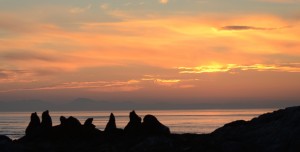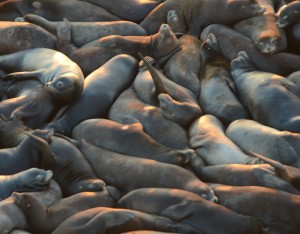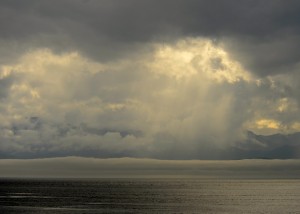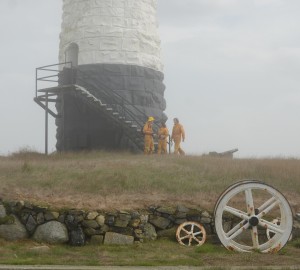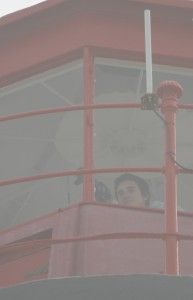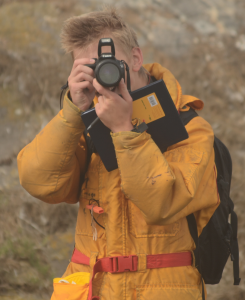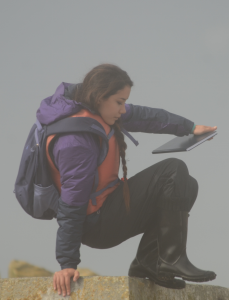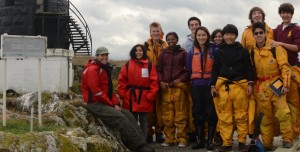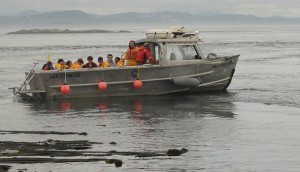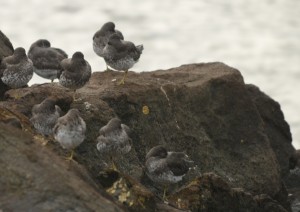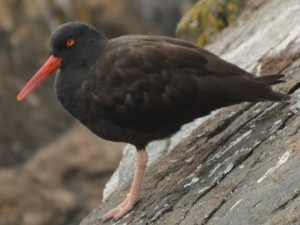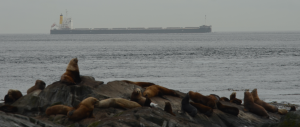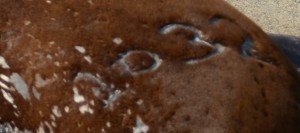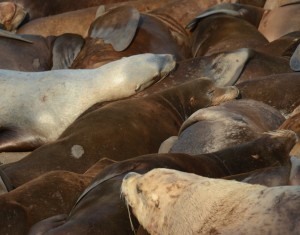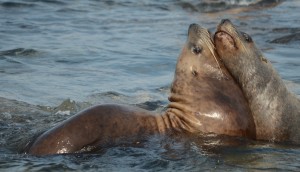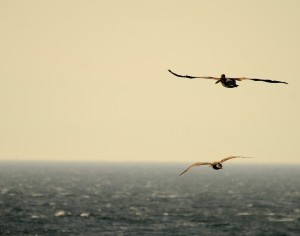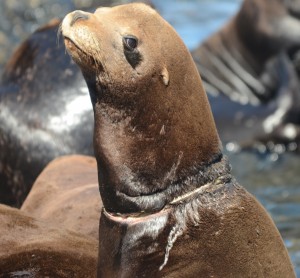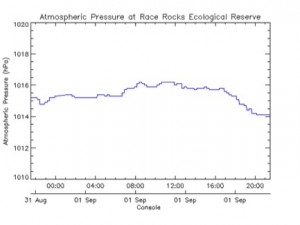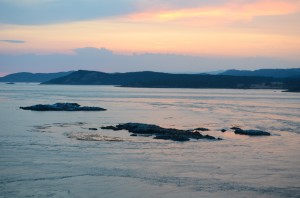It was socked in with fog as thick as pea soup today. It cleared off this evening just before six and well in time for a fantastic sunset and my realization that it was probably a beautiful day, just about everywhere else in the region.
There was not much wind today, the high was 5 knots out of the east-northeast and everything is damp almost as if it had rained. Most of the day the flag hung limp and a bit sodden. The barometer continued yesterday’s gradual rise until about noon when it started to slowly decline, ending up at about the same place it started. The forecast looks like rain for at least a week but it probably just means showers. I keep forgetting that rain here and rain in Bamfield are just not the same thing.
There were no whale-watching boats observed although one commercial sports fishing boat stopped by to have a look at the sea lions.
The results of this weeks’ large animal census follows:
Steller’s Sea Lion 173
California Sea Lion 412
Harbour Seal 136
Elephant Seal 12
River Otter 1
Canada Goose 20
Greater White-fronted Goose 5
Harlequin Ducks 8
Double-crested Cormorant46
Pelagic Cormorant 5
Black Oystercatchers 20
Black Turnstones 6
Killdeer 4
Glaucous-winged Gull 88
Glaucous-winged x Western Gull Hybrid
Thayer’s Gull 303
Heerman’s Gull 17
California Gull 12
Western Gull 2
Ring-billed Gull 2
Gull sp, 260
Bald Eagle (adult) 1
Fox Sparrow 1
Song Sparrow 1
Savannah Sparrow 17
Most of the sea lions have moved over to the west side of the island and are hauling out on Middle Island and some of the smaller rocks. They are seem to be spending much more time in the water instead of sleeping on land and salmon kills are visible all over the Ecological Reserve when the visibility is good enough to see.
Thayer’s Gulls are the dominant gull now in terms of numbers and they seem to spend a lot of their day resting and grooming. All the gulls seem to take advantage of the sea lion feeding events as bits of salmon are flying. I double-checked my Thayer’s Gull identification with Dick Cannings and his super-birder son, Russell and they concur that this is a Thayer’s Gull.
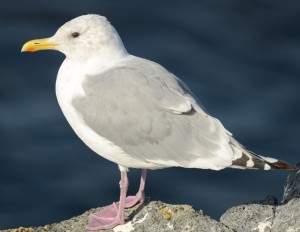
Race Rocks is an important resting, roosting and feeding place for Thayer’s Gulls recovering from a busy summer in the high Arctic.
My biggest task today was attempting to muck out the roof of the energy building where the solar panels are installed. It reminded me of a stable job I had when I was a kid. I actually used a snow shovel to scoop out the organic crud that had built up under the last of the panels to be raised by the electrician yesterday. The rest of the day’s maintenance-type activities were the regular jobs entailed in living here; making fresh water, topping up the batteries with the generator (even the solar panels had a hard time keeping up in the thick fog), doing the seawater sampling and sweeping a few walkways.
